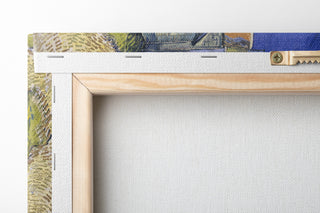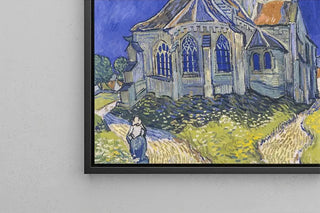Painting Ruins of the Karnak Palace in Thebes - Jacob Jacobs | Art print


View from behind

Frame (optional)
Ruins of the Palace of Karnak at Thebes: a journey through time in the heart of ancient Egypt.
"Ruins of the Palace of Karnak at Thebes" evokes the majesty and grandeur of a bygone era, when pharaohs ruled over a powerful empire. This artwork, rich in detail, captures the remains of an iconic archaeological site, where imposing columns and hieroglyphs tell the story of a glorious past. The earthy colors and golden hues create a mystical atmosphere, inviting the viewer to explore the secrets of this fascinating civilization. The painting technique used, with its textures and play of light, allows you to feel the depth and scale of these ruins, transporting the observer on a journey through time.
Ruins of the Palace of Karnak at Thebes: a symbol of Egyptian heritage.
The artist behind "Ruins of the Palace of Karnak at Thebes" is part of an artistic tradition that highlights the importance of historical and cultural sites. Although their name is less known, their work demonstrates a deep admiration for ancient Egypt and its architectural achievements. At a time when archaeology was beginning to fascinate the Western world, this depiction of the Karnak ruins underscores the growing interest in history and heritage. Artists of this period often sought to immortalize the wonders of the past, and this canvas is a perfect example, combining historical accuracy with artistic sensitivity.
A decorative acquisition with multiple assets.
The art print of "Ruins of the Palace of Karnak at Thebes" is a decorative piece that will enrich your interior with a touch of history and mystery. Whether in a living room, office, or bedroom, this painting brings a unique and captivating atmosphere. Its reproduction quality guarantees fidelity to the details of the original work, allowing you to enjoy its aesthetic appeal daily. By integrating this piece into your decor, you offer your space an invitation to contemplation and escape, while celebrating the cultural heritage of ancient Egypt.

Matte finish

View from behind

Frame (optional)
Ruins of the Palace of Karnak at Thebes: a journey through time in the heart of ancient Egypt.
"Ruins of the Palace of Karnak at Thebes" evokes the majesty and grandeur of a bygone era, when pharaohs ruled over a powerful empire. This artwork, rich in detail, captures the remains of an iconic archaeological site, where imposing columns and hieroglyphs tell the story of a glorious past. The earthy colors and golden hues create a mystical atmosphere, inviting the viewer to explore the secrets of this fascinating civilization. The painting technique used, with its textures and play of light, allows you to feel the depth and scale of these ruins, transporting the observer on a journey through time.
Ruins of the Palace of Karnak at Thebes: a symbol of Egyptian heritage.
The artist behind "Ruins of the Palace of Karnak at Thebes" is part of an artistic tradition that highlights the importance of historical and cultural sites. Although their name is less known, their work demonstrates a deep admiration for ancient Egypt and its architectural achievements. At a time when archaeology was beginning to fascinate the Western world, this depiction of the Karnak ruins underscores the growing interest in history and heritage. Artists of this period often sought to immortalize the wonders of the past, and this canvas is a perfect example, combining historical accuracy with artistic sensitivity.
A decorative acquisition with multiple assets.
The art print of "Ruins of the Palace of Karnak at Thebes" is a decorative piece that will enrich your interior with a touch of history and mystery. Whether in a living room, office, or bedroom, this painting brings a unique and captivating atmosphere. Its reproduction quality guarantees fidelity to the details of the original work, allowing you to enjoy its aesthetic appeal daily. By integrating this piece into your decor, you offer your space an invitation to contemplation and escape, while celebrating the cultural heritage of ancient Egypt.






